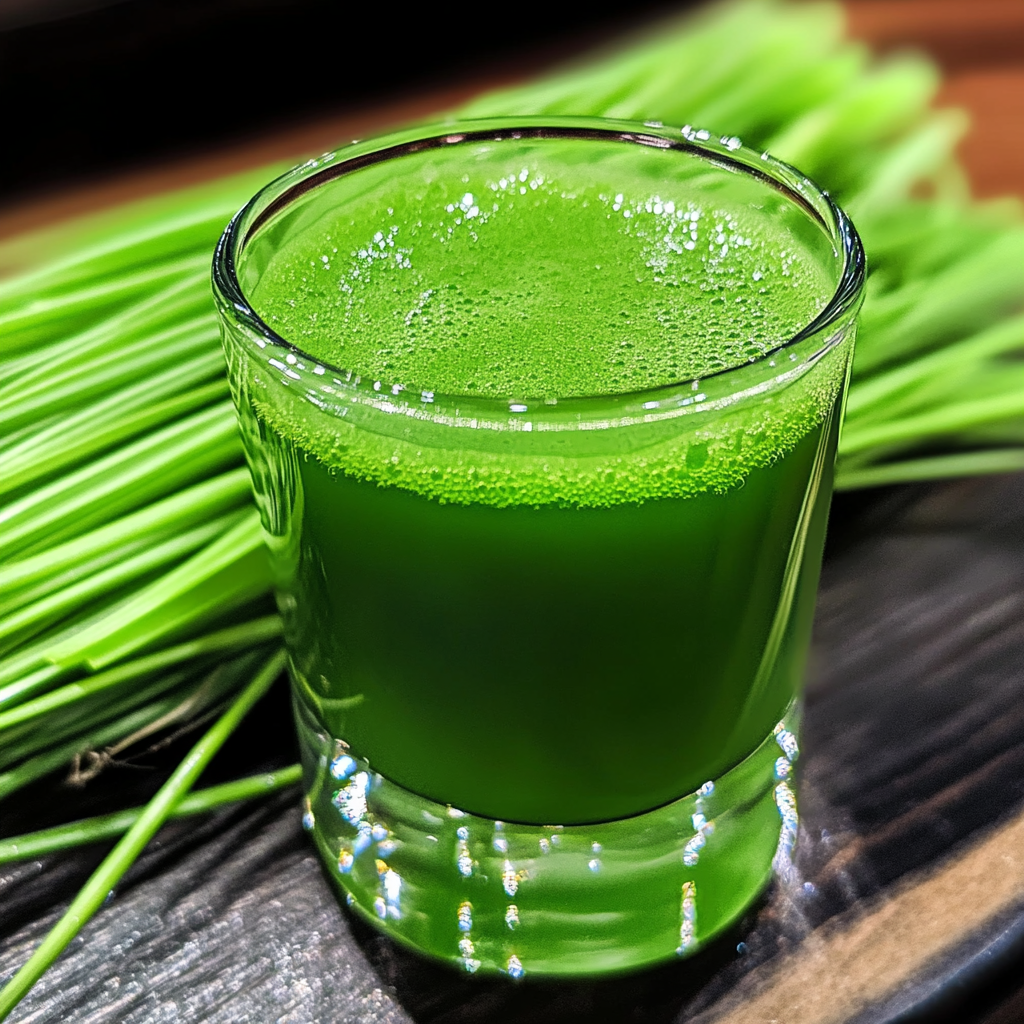The Incredible Benefits of Wheatgrass Juice
Wheatgrass has long been touted as a superfood, and for good reason – this vibrant green elixir is packed with an incredible array of vitamins, minerals, and antioxidants that can provide a wealth of benefits for your overall health and well-being. Whether you’re a seasoned juicing enthusiast or new to the world of wheatgrass, this comprehensive guide will walk you through everything you need to know to start reaping the rewards of this nutritional powerhouse.
❤️ Why You’ll Love This Recipe ❓
Beyond its impressive nutritional profile, wheatgrass juice offers a host of additional benefits that make it a truly exceptional addition to any healthy lifestyle. Its rich chlorophyll content helps to purify the blood and boost oxygen levels, while the concentrated enzymes and amino acids can aid in digestion, detoxification, and even cellular regeneration. Plus, many people find the crisp, grassy flavor to be incredibly refreshing and energizing.
What’s more, wheatgrass juice is incredibly versatile and can be easily incorporated into your daily routine. Whether you prefer to drink it straight, blend it into a smoothie, or even use it as a base for salad dressings or marinades, this nutrient-dense elixir is sure to become a staple in your kitchen.
🛒 What You Need to Prepare Wheatgrass Juice ❓
• 1 lemon, juiced (optional)
• 1 inch of fresh ginger, peeled and grated (optional)
The beauty of this wheatgrass juice is that the main ingredient – the wheatgrass itself – is incredibly easy to come by. Many grocery stores and health food shops now carry fresh wheatgrass, and it’s also simple to grow your own at home using a wheatgrass growing kit. The addition of lemon and ginger can help to balance the natural grassiness of the wheatgrass and provide an extra boost of flavor and nutrition.
📝 How to Make Wheatgrass Juice Step-by-Step ❓
• Step 2: Using a juicer, slowly feed the wheatgrass through the chute, pressing down gently to extract the maximum amount of juice.
• Step 3: If desired, add the lemon juice and grated ginger to the wheatgrass juice and stir to combine.
• Step 4: Pour the wheatgrass juice into a glass and enjoy immediately for maximum nutrient retention.
⏱️ Timing Overview
• Juicing time: 3-5 minutes
• Total time: 8-10 minutes
Compared to traditional juicing methods that can take up to 20 minutes, this wheatgrass juice recipe saves you valuable time while delivering a powerful nutritional punch.
👩🏻⚕️ Nutritional Information
Per serving (based on 1 cup of juice):
• Protein: 2g
• Carbohydrates: 6g
• Fat: 0g
• Fiber: 2g
• Sodium: 0mg
These wheatgrass juice shots provide approximately 20% of your daily vitamin A requirements and 15% of your daily vitamin C needs, making them not just delicious but nutritionally valuable as well.
🔄 Healthier Alternatives for the Recipe
• Lower-carb version: To reduce the carbohydrate content, you can add a splash of water or unsweetened almond milk to the juice.
• Dairy-free adaptation: Wheatgrass juice is already dairy-free, so no additional modifications are necessary.
• Added protein: For an extra protein boost, you can blend the wheatgrass juice with a scoop of plant-based protein powder or a tablespoon of nut butter.
• Boost vegetables: To further enhance the nutritional value, you can add other leafy greens like spinach or kale to the juicer along with the wheatgrass.
These modifications can help to tailor the wheatgrass juice to your specific dietary needs and preferences without compromising the fundamental health benefits.
🍽️ Serving Suggestions
• Blend the juice with frozen fruit, like pineapple or mango, for a delicious and nutrient-dense smoothie.
• Use the wheatgrass juice as a base for a salad dressing or marinade, adding a boost of flavor and nutrition to your meals.
• For a complete breakfast or snack, enjoy the wheatgrass juice alongside a hard-boiled egg or a handful of nuts and seeds.
❌ Common Mistakes to Avoid
• Forgetting to wash the wheatgrass: Thoroughly cleaning the wheatgrass before juicing is essential to remove any dirt or debris that could end up in the final product.
• Using a blender instead of a juicer: While a blender can be used to create a wheatgrass “smoothie,” it won’t be able to extract the same concentrated level of nutrients as a dedicated juicer.
🧊 Storing Tips for the Recipe
These wheatgrass juice shots retain their quality remarkably well:
• Freezing: For longer-term storage, you can freeze the wheatgrass juice in ice cube trays or small jars. Thaw in the refrigerator before consuming.
❓ FAQs
Can I make wheatgrass juice ahead of time?
While wheatgrass juice is best consumed immediately after juicing, you can store it in the refrigerator for up to 24 hours. For longer-term storage, freeze the juice in ice cube trays or small jars and thaw in the refrigerator before drinking.
Can I substitute other greens for the wheatgrass?
Yes, you can absolutely use other leafy greens like spinach, kale, or parsley in place of the wheatgrass. However, keep in mind that the flavor and nutrient profile will be different. Wheatgrass is unique in its high chlorophyll content, which contributes to its distinct grassy taste and impressive health benefits.
Is wheatgrass juice suitable for a vegan or gluten-free diet?
Yes, wheatgrass juice is naturally vegan and gluten-free, making it an excellent choice for those following specialized diets. Just be sure to check the labels of any additional ingredients, like lemon juice or ginger, to ensure they are also free of animal products and gluten.
Why is my wheatgrass juice foaming so much?
Foaming is a common occurrence when juicing wheatgrass, as it is a natural result of the high chlorophyll content. To minimize foaming, be sure to feed the wheatgrass into the juicer slowly and gently. You can also try adding a small amount of lemon juice or apple cider vinegar to the juice, which can help to reduce the foam.
Can I add other fruits or vegetables to the wheatgrass juice?
Absolutely! While wheatgrass juice is delicious on its own, you can easily customize it by blending in other nutrient-dense ingredients. Try adding a handful of spinach or kale, a slice of ginger, or even a touch of honey or maple syrup for sweetness. Just be mindful that adding too many additional ingredients can dilute the potent wheatgrass flavor.
Conclusion
These wheatgrass juice shots represent the perfect balance of convenience, flavor, and unparalleled nutrition. Whether you’re looking to kickstart your day with a refreshing and energizing boost or seeking a natural way to support your body’s detoxification processes, this versatile elixir is sure to become a staple in your health and wellness routine.
With its vibrant green hue and crisp, grassy taste, wheatgrass juice is not only a feast for the senses but also a powerhouse of essential vitamins, minerals, and antioxidants. By incorporating this superfood into your diet, you’ll be taking a proactive step towards better overall health and well-being.







